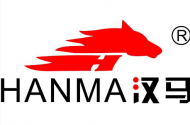Double rib structure 1. Definition

Commonly known as cotton wool tissue, it is a double-sided weft-knitted tissue composed of two rib tissues compounded with each other. The coil longitudinal row of another rib tissue is arranged between the longitudinal rows of one rib tissue coil.
2.Features
(1) The longitudinal front coil of one rib weave covers the longitudinal back coil of the other rib weave, and the front coil is displayed on both sides of the fabric. Double front organization.
(2) A coil row is formed by two adjacent looping systems (two yarns), so the adjacent coils on the same row differ by half a turn height from each other in the longitudinal direction.
Double Rowan organizational properties
- The extensibility, elasticity and detachability are less than those of rib structure.
(it is composed of two stretched rib structures. It is thicker, smoother and more stable than rib) - Only reverse the braiding direction and do not separate along the braiding direction.
- It is not easy to separate vertically.
- No curling and skew.
- Thick and warm.
(the coil spacing is reduced and the cloth surface is dense)
3 Application
Cotton sweater, T-shirt, sportswear, etc
Double rib weave
The double rib weave consists of two yarns forming a coil row. When one yarn is woven, the odd needles of the lower needle cylinder and the even needles of the upper needle disc cooperate to form a 1 + 1 rib; When another yarn is woven, the even number of needles of the lower needle cylinder and the odd number of needles of the upper needle disc cooperate to form another 1 + 1 rib. Interlock to form a double rib structure.
4 Ring forming and organization technology of double thread machine
Loop forming parts and their configuration
The lower needle cylinder and the upper needle disc are arranged in a 90 ° relative configuration
Four needles are required:
Lower needle: high heel needle 1, low heel needle 2
Upper needle: high heel needle 2 ‘, low heel needle 1’
Alignment of upper and lower stitches:
The upper high heel needle is aimed at the lower low heel needle,
The upper low heel needle is aimed at the lower high heel needle.
Related Article
Circular knitting machine basic operation knowledge
Read moreCircular knitting machine basic operation knowledge
What is three threads in cotton yarn?
How to distinguish pure cotton from polyester cotton?
Read moreHow to distinguish pure cotton from polyester cotton?






